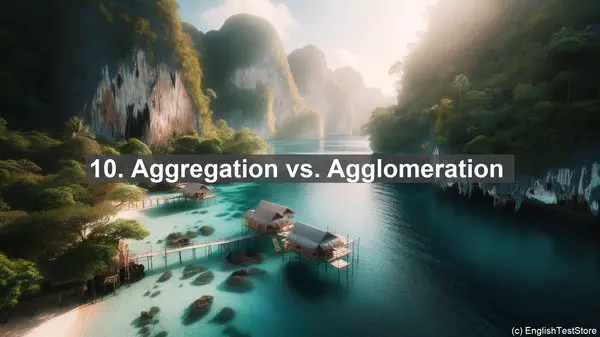Introduction
Welcome to our bionanotechnology class. Today, we’ll be discussing the top 10 commonly confused words in this fascinating field. Understanding these words is crucial for your success in bionanotechnology. So, let’s dive in!
1. Nanoscale vs. Microscale
The terms nanoscale and microscale often cause confusion. Nanoscale refers to dimensions in the range of 1-100 nanometers, while microscale refers to dimensions in the range of 1-100 micrometers. Remember, nanoscale is a thousand times smaller than microscale.

2. Nanoparticles vs. Nanomaterials
Nanoparticles and nanomaterials are related but not the same. Nanoparticles are particles with nanoscale dimensions, while nanomaterials encompass a broader category, including nanoparticles, nanotubes, and more. Nanoparticles are like building blocks of nanomaterials.
3. Bottom-up vs. Top-down Approaches
Bottom-up and top-down approaches are two strategies for fabricating nanostructures. Bottom-up involves building structures atom by atom or molecule by molecule, while top-down involves carving larger structures into smaller ones. Both approaches have their advantages and applications.
4. Quantum Dots vs. Quantum Wells
Quantum dots and quantum wells are types of nanostructures used in various applications. Quantum dots are 3D structures, while quantum wells are 2D structures. Think of quantum dots as tiny balls and quantum wells as thin sheets.
5. Self-Assembly vs. Directed Assembly
Self-assembly and directed assembly are methods for arranging nanostructures. Self-assembly occurs spontaneously, driven by the inherent properties of the structures, while directed assembly involves external forces or templates. Self-assembly is like a puzzle solving itself, while directed assembly is like solving a puzzle with a guide.
6. Biocompatibility vs. Bioactivity
Biocompatibility and bioactivity are important considerations in bionanotechnology. Biocompatibility refers to how well a material interacts with biological systems without causing harm, while bioactivity refers to the material’s ability to elicit a specific biological response. A material can be biocompatible but not bioactive.
7. Dendrimers vs. Polymers
Dendrimers and polymers are both macromolecules, but they have distinct structures. Dendrimers have a highly branched, tree-like structure, while polymers have a linear or branched structure. Dendrimers are like intricate snowflakes, while polymers are like spaghetti strands.
8. In vivo vs. In vitro
In vivo and in vitro are terms used to describe experiments. In vivo refers to experiments conducted within a living organism, while in vitro refers to experiments conducted in a controlled environment outside the organism. In vivo is like studying in a real classroom, while in vitro is like studying in a simulation.
9. Sensitivity vs. Specificity
Sensitivity and specificity are measures of a test’s accuracy. Sensitivity refers to a test’s ability to correctly identify positive cases, while specificity refers to its ability to correctly identify negative cases. Sensitivity is like a metal detector that rarely misses anything, while specificity is like a filter that only allows specific items through.
10. Aggregation vs. Agglomeration
Aggregation and agglomeration both refer to the clustering of particles, but they differ in the level of interaction. Aggregation involves strong particle-particle interactions, while agglomeration involves weaker interactions. Aggregation is like a tightly knit group, while agglomeration is like a loosely connected crowd.

